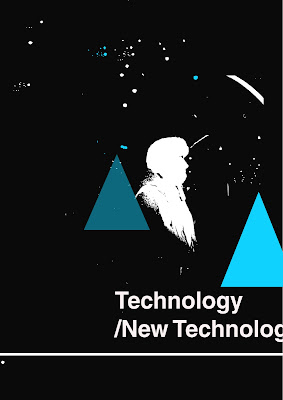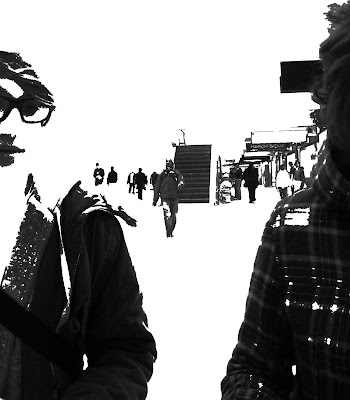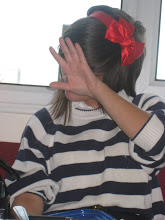


Researching, exploring and documenting my relationship with communication technology has given me a massive insight into, not only, the definition of what communication technologies are and how diverse they are. But also, its opened up many new options for me that I didn't feel I had towards the beginning of my visual journey in September. The sheer number of ways to communicate through technology, has shown me what creative opportunities and limitations some of these technologies hold and given me time to think about what technologies are better suited to what types of media, for example concentrating on illustration for my own little project, taught me that illustration could be formatted and finalized in so many different ways. These include, t-shirt and clothing illustration design, posters, advertisements, websites, animation and even live art in bars or cafes. I also learnt a lot about the social networking sites, of which there are so many and that I used to just take for granted, not think about how and where they come from. Plus, gaining an interest for all the online portfolios and blogging sites that are around today. What was key in this processes, was that I chose to display my work in a sketchbook and also by having my own blog and posting every other day, my discovery, interests and of course progress on my own project.
Within this project we selected and tested, interactivity, narrative and communication - some key design processes. To test interactivity and communication, we looked into 'gaming' and the varying online games. The games we invented and set for other groups were to be played in Bradford. The city becomes a metaphor for shared space- for exchange and communication. The games we created, developed and tested ourselves followed either a psychogeography theme, role play theme, time based, transport networked games, signs and symbols or geo-caching. The task set would be either a set route or devised by the group at the time of the walk. It was for the group to 'get to know' Bradford, (make people explore) and each group were to take photographs in some strategic way to the task. The task that I received in my group was to take pictures on a devised route of everything that was red. This then led to geo-tagging the places that I found the photos I took.
Exploring narrative showed me the way to getting to know the technology of bluetooth much better and appreciating the capabilities of the mobile phone, even if the pictures we ended up with weren't of the best quality. Using mobile phones and comparing them to others photos in the group brought up the question of the development of the mobile phone and gave me a greater realisation that if you look around you, practically everybody around you has one. Could this be the greatest ever sold, worldwide item in society today? Not only the technology, but the actual task of taking photos on our phones to communicate the narrative we had created through 'Chinese whispers' was interesting especially being interested in illustration because it made me realise how many different ways messages and images can be communicated to an audience and also interpreted by hat audience.
I learnt a lot from actually having to re-do the task, it made me more aware that your first thoughts of something could always be better if you ponder and think of everything possible rather than jumping at the first idea you have. I believe this is particularly important in deciding on a project, which I do usually have a lot of trouble doing, so this has given me a better insight into decision making.
For my project, I chose to base my project on, photography, illustration and printing, concentrating mainly on illustration and how through time, the world has become much more digitalised, using graphics tablets, and programmes such as photoshop and illustrator to put together images, even questioning if paper will be around in ten years? This interested me solely due to the fact that I think this is where I would like to be and what I would to be doing in the years to come and through researching this particular subject I could gain a better insight into the profession i'm wanting to put myself into. How will illustration be excepted in 10 years? I found an interesting article about the 19 year old guy who worked in a card factory for a year after being freelance for two years and this leap into the real world for a year really made him question what illustration was becoming. A repeatative market where what sells will be produced? I also now want to look more into how illustration in advertising can be used to trick and portray hidden messages as I always thought this was only true through typography. I believe there is a really strong relationship between my chosen technologies, as most illustration artists that I researched during this project had all gone on to from animations and had their own photography. Animation seems like the next step to bringing your illustrations to life and printing is always important within illustration, as there are just so many ways to format your final piece.
When discussing tasks we had done and in crit sessions about our own projects it really helped me when we were in smaller groups and also not 'friend' groups as it was nice to get a fresher out look on my current point and findings from people that didn't know me as well. Feedback that I received from peers and tutors was useful and it helped me to realise that history is just as important as the present and it can sometimes lead you to a better result. It also felt useful to use communication technology as a research tool as well as a subject of exploration as it felt as though through using a blog I was actually testing the use and ease of technology all the time.
I think that i've successfully communicated my process and research, through my blog, I managed to put everything in a good order and made it easy to establish through each of the headings, however this is something which is good about blogspot. Although the set out of the way you type and insert images I think could maybe be improved a little, for non computer literate people. I may get a flicker account as from looking at others' blogs they look quite swish and watching friends, they seem to get around them easy.
and finally that everything I have learnt and experimented with throughout 'the sandpit' has really made me appreciate the time and dedication that goes into all the work i've seen, especially animation. For every animation I see now, I feel in debt to the aritst for watching it! Not only this but, this whole project has just made me see communication as not just something obvious like a telephone or web device, but also more and more through my own work, and everything I ever produce. Its made me want to find out and more and keep myself updated monthly about what is really going on in todays society to do with technology and where technology is being taken... considering that in the 90's they thought that we wouldn't have paper anymore in 2000, what will it be like in 10 years time?


























